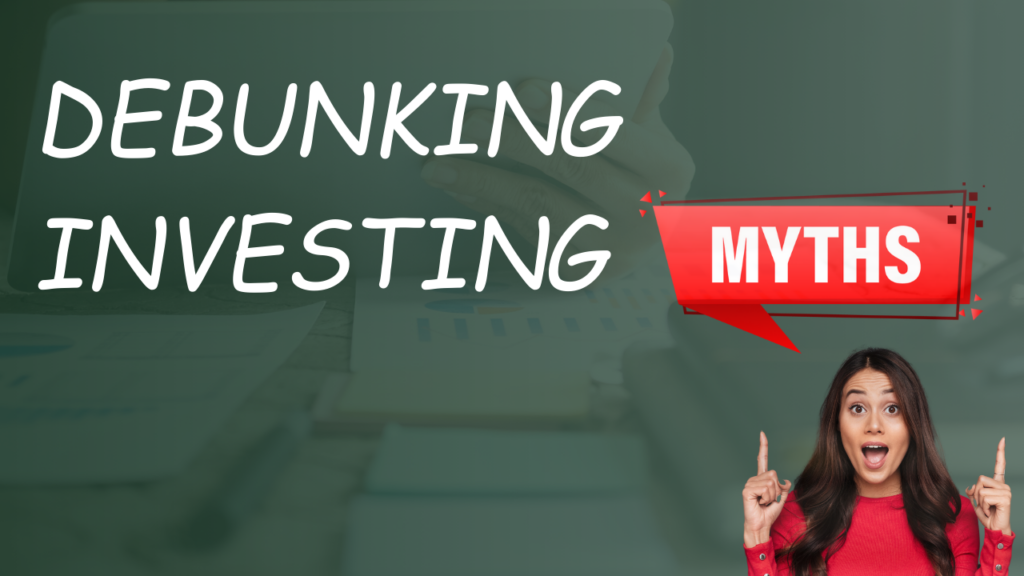How to Manage Your Finances Well with Just 3 Easy Steps
How to Manage Your Finances Well with Just 3 Easy Steps Managing your finances effectively is crucial for achieving financial stability and reaching your financial goals. However, the process doesn’t have to be overwhelming. Here are three easy steps to help you take control of your finances and start investing with confidence. Step 1: Create a Budget and Stick to It A budget is the foundation of good financial management. It helps you understand where your money is going and where you can cut back. Follow these simple steps to create a budget: – Track Your Income and Expenses Start by listing all your sources of income and your monthly expenses. This includes everything from rent and groceries to entertainment and savings. It’s essential to have a clear picture of your cash flow. Use tools like budgeting apps or spreadsheets to make this process easier. By tracking every dollar, you can identify patterns and areas where you might be overspending. – Categorize Your Expenses Divide your expenses into fixed (rent, utilities) and variable (dining out, shopping) categories. This will help you identify areas where you can save. Fixed expenses are typically non-negotiable, but variable expenses can often be adjusted. For example, you might find that you’re spending more on dining out than you’d like. Reducing this expense can free up money for savings or investments. – Set Financial Goals Determine your short-term and long-term financial goals, such as saving for a vacation, building an emergency fund, or investing for retirement. Having clear goals will keep you motivated and focused. Make sure your goals are SMART (Specific, Measurable, Achievable, Relevant, Time-bound). For instance, instead of saying “I want to save money,” say “I want to save 5,000 for an emergency fund in one year.” – Allocate Funds Assign a specific amount of money to each category and stick to it. Make sure to include savings as a non-negotiable expense. A popular method is the 50/30/20 rule: allocate 50% of your income to needs, 30% to wants, and 20% to savings and debt repayment. This structure helps balance your spending and ensures you’re saving for the future. Step 2: Start Saving and Investing Saving and investing are key to building wealth and securing your financial future. Here’s how to get started: – Build an Emergency Fund Aim to save at least 3-6 months’ worth of living expenses in an easily accessible account. This will provide a safety net for unexpected expenses. Having an emergency fund ensures that you’re not derailed by unforeseen events like medical emergencies, car repairs, or job loss. Keep this fund in a high-yield savings account where it’s accessible but also earning interest. – Invest Wisely Once your emergency fund is in place, start investing. Consider these options: 1. Help Investing Money Financial therapy can provide the support and guidance you need to make informed investment decisions. At Greenshoots Wealth, we offer personalized financial therapy sessions to help you understand your financial habits and create effective strategies for investing and saving. 2. Start a SIP (Systematic Investment Plan) A SIP allows you to invest a fixed amount regularly in mutual funds. It’s an excellent way to start investing, especially for beginners. By investing a small amount each month, you benefit from the power of compounding and can build wealth over time. 3. Start Investing with Us Greenshoots Wealth offers beginner-friendly investment options. Our team will work with you to find investment opportunities that align with your goals and risk tolerance, helping you start your investment journey confidently. 4. Help with Investing My Money Use the resources and tools available through Greenshoots Wealth to educate yourself about different investment strategies. Understanding the basics of stocks, bonds, mutual funds, and ETFs can empower you to make informed decisions. 5. Diversify Your Portfolio Spread your investments across various asset classes such as stocks, bonds, and real estate to minimize risk and maximize returns. Diversification helps protect your portfolio from market volatility. If one asset class underperforms, others might perform well, balancing your overall returns. Step 3: Monitor and Adjust Your Financial Plan Managing your finances is an ongoing process. Regularly review your budget and investments to ensure you’re on track to meet your goals. Here’s how: – Review Your Budget Monthly Compare your actual spending to your budgeted amounts and make adjustments as needed. This will help you stay disciplined and avoid unnecessary expenses. Monthly reviews help you catch any overspending early and adjust your habits accordingly. It’s also a good time to reassess your financial goals and make sure your spending aligns with them. – Track Your Investments Keep an eye on the performance of your investments. Make sure they are aligned with your financial goals and risk tolerance. Don’t hesitate to seek professional advice if needed. Use tools like investment apps and portfolio trackers to stay updated on your holdings. Regularly rebalancing your portfolio ensures that your asset allocation stays aligned with your risk tolerance and goals. – Adjust Your Plan Life changes, and so should your financial plan. Whether it’s a job change, a new financial goal, or market fluctuations, be prepared to adjust your budget and investment strategy accordingly. Flexibility is key to long-term financial success. If you receive a raise, for example, consider increasing your savings rate or investing more. If your expenses increase, look for ways to cut back in other areas. Wrapping Up By following these three easy steps—creating a budget, saving and investing, and regularly monitoring and adjusting your financial plan—you can take control of your finances and work towards a secure financial future. Remember, the key is to start small, stay consistent, and seek help when needed. If you’re looking for personalized financial advice or need help investing money, don’t hesitate to reach out to Greenshoots Wealth. Our team of experts is here to provide the support and guidance you need to achieve your financial goals. Start investing with us today and take the first step towards financial independence!
How to Manage Your Finances Well with Just 3 Easy Steps Read More »













